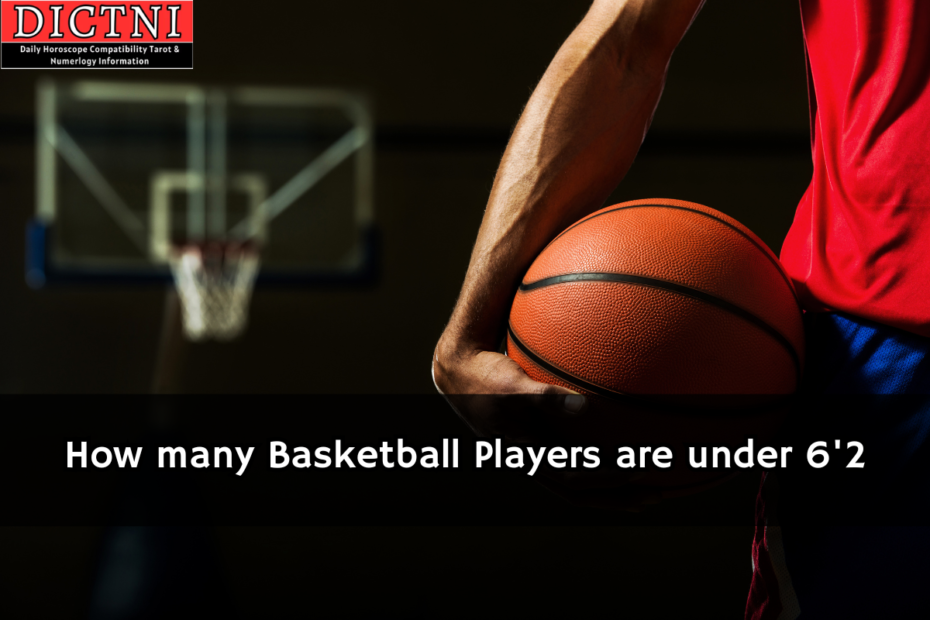Introduction
Basketball players come in a variety of physical features, and the sport is renowned for its athleticism, skill, and strategic prowess. In the realm of basketball, there is a distinct group of players who challenge the accepted standards of height, even if towering giants predominate in the paint. This piece explores the fascinating world of basketball players who are shorter than 6 feet 2 inches (6’2″), focusing on their contributions, influence, and difficulties while playing.
Breaking Height Boundaries: The Players Under 6’2″
Players under six feet two inches add a fresh dimension to the game in a sport where height is frequently seen as a major advantage. Their talent, quickness, and agility become invaluable assets that challenge the conventional wisdom that height is a necessary requirement for basketball success.
Historical Icons: Players under 6’2″ have made a lasting impression on basketball history. At six feet tall, one of the most recognizable characters in this group is Allen Iverson. His dynamic play, deft crossovers, and ability to score points cemented his place among the NBA’s all-time top point guards.
Changing Perceptions: The popularity of shorter basketball players has helped to alter people’s ideas about the sport’s height requirements. Taller players continue to dominate at some positions, but the accomplishments of smaller players highlight the value of skill, basketball IQ, and willpower.
Positional Versatility: Players under 6’2″ frequently succeed as shooting guards or point guards because of their ability to score points, handle the ball well, and see the court. They can get past defenses and open doors for themselves and their allies because to their agility.
Players Under the Stature of 6’2″
Because basketball is a decentralized sport, it is difficult to provide an accurate number of players under 6’2″. However, we may look at different leagues and divisions to learn more about this dynamic group.
NBA Players: Players from a variety of height categories compete in the National Basketball Association (NBA). Even though a lot of guards are shorter than 6’2″, the stat can change from season to season according on player additions and team rosters.
College and University Basketball: In the United States in particular, collegiate basketball serves as a breeding ground for players of all sizes. In collegiate basketball, point guards and shooting guards under 6’2″ are essential players who add to the talent pool.
International Leagues: Professional leagues in Asia and South America, as well as the EuroLeague, feature a wide range of players from different countries. These leagues are full of undersized guards that are quite skilled and quick.
Youth and Amateur Basketball: A significant proportion of players under 6’2″ are frequently found in youth and amateur basketball leagues at the local level. These athletes, who inject passion and energy into the game, are essential to the growth of the sport.
Examples: Prominent Athletes Under 6′ 2″
Chris Clemons (5’9″): Clemons, a guard who played for the Houston Rockets in the past, is a prime example of tenacity and shooting skill. During his undergraduate and professional careers, Clemons demonstrated his scoring skills despite being one of the shortest players in modern NBA history.
Spud Webb (5’7″): Webb’s incredible career included him winning the NBA Slam Dunk Contest in 1986, surprising everyone with his 5’7″ height and ability to dunk. Stereotypes regarding height and athleticism in the NBA were contested by his achievements.
Muggsy Bogues (5’3″): Bogues spent 14 seasons in the NBA and is the shortest player in NBA history. Bogues, who won over fans with his superb passing and defensive abilities, proved that height is not a hindrance to a prosperous career.
Nate Robinson(5’9″) : Robinson, who has won the NBA Slam Dunk Contest three times, is known as one of the league’s most exciting players due to his explosive agility and scoring prowess. His accomplishments highlighted the influence that smaller players can have in the NBA.
The Development of Playing Techniques
Transition to Positionless Basketball: Players are no longer restricted to conventional roles based on height in the positionless basketball of the modern day. Guards that are undersized frequently fill many roles, which helps to create a more fluid and dynamic style of play.
Three-Point Revolution: Many undersized players have benefited from the focus on three-point shooting. The capacity to shoot efficiently from beyond the arc has grown in importance, enabling shorter players to contribute significantly to the offensive effort.
A greater focus is being placed on developing skills because basketball success is no longer only determined by height. It is now crucial to strengthen your skills in shooting, ball handling, and basketball IQ. Players that are undersized yet excel in these areas can fit right in with the modern game.
Versatility in Defensive strategies: Undersized athletes are frequently used tactically by coaches in defensive strategies. They can disrupt passing lanes, which adds a dynamic aspect to team defense, and their speed and agility make them good perimeter defenders.
Conclusion
The world of basketball players under 6’2″ is an intriguing fusion of talent, willpower, and the dynamic aspect of the game. These athletes defy expectations and add to the colorful fabric of basketball, from historical icons who paved the way to today’s budding stars.
The influence of shorter players is growing as the game embraces diversity, skill development, and versatility more and more. Players under 6’2″ make a lasting impression on the game they love, whether they dazzle with speed and agility, display their scoring prowess, or lead their teams with unyielding dedication. Their tales serve as a reminder that, in basketball, skill, passion, and heart still rule supremely on the floor, and that true excellence transcends height boundaries.
